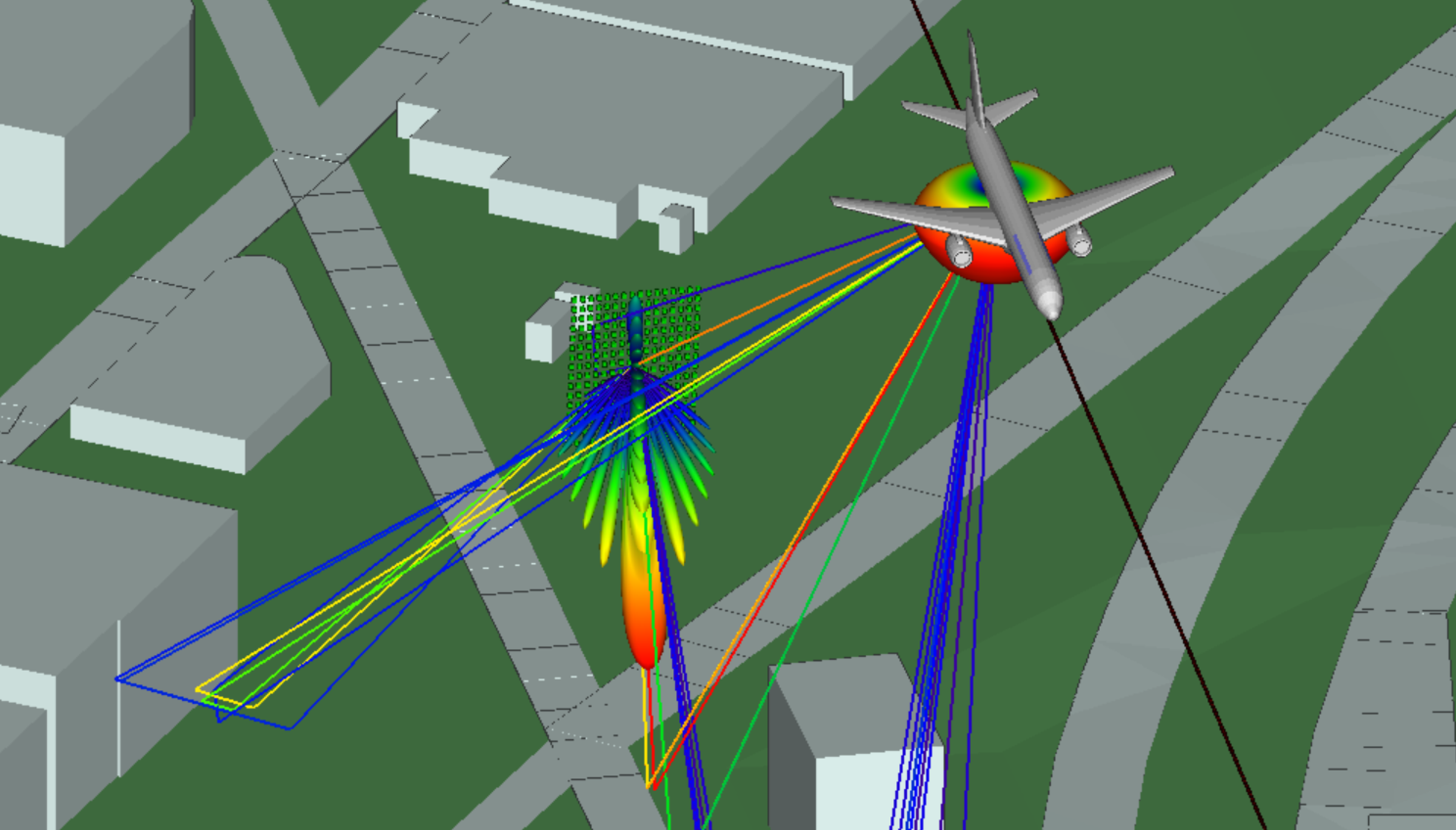In this paper, results are presented of propagation experiments conducted to verify the accuracy of a novel ray-optical scattering model for EES.
A Fast Indoor Coverage Prediction Scheme at 60 GHz Based on Image Processing, Geometrical Optics, and Transport Theory
Scalable Modeling of Human Blockage at Millimeter-Wave: A Comparative Analysis of Knife-Edge Diffraction, the Uniform Theory of Diffraction, and Physical Optics Against 60 GHz Channel Measurements
Human blockage at millimeter-wave frequencies is most commonly modeled through Knife-Edge Diffraction (KED) from the edges of the body shaped as a vertical strip. Although extensively validated in controlled laboratory experiments, the model does not scale to realistic 3D scenarios with many, randomly oriented bodies, on which multipath signals can be incident from any direction, not just normal to the strip. To address this, in this article we investigate computational electromagnetic methods based on raytracing.
Optimization of 5G Infrastructure Deployment Through Machine Learning
Assessing 5G Radar Altimeter Interference for Realistic Instrument Landing System Approaches
The safe rollout of new or enhanced 5G services using C-band spectrum near airports in 2022-2023 will require realistic modeling of radio propagation to mitigate potential interference with legacy radar altimeters which remain in operation as of summer 2022. In this whitepaper, we use Wireless InSite to provide a realistic assessment of radar altimeter interference due to emissions from 5G base stations along a landing approach to runway 27L of Chicago O’Hare International Airport.
Magnetic Resonance Wire Coil Losses Estimation with Finite-Difference Time-Domain Method
Auto-Radar Drive Scenario Simulation: Increasing Realism with Multipath, Diffuse Scattering, and Micro-Doppler
mmWave Massive MIMO Beamforming in Dynamic, Urban Environments
This Microwave Journal article, which was contributed by Remcom, explores the effectiveness of massive MIMO beamforming at mitigating the challenges expected from using the expanse of spectrum available in the mmWave band. Specifically, it explores a use case involving our Wireless InSite EM propagation software and its mmWave hybrid beamformer capabilities to transmit data streams to a sedan driving in central Manhattan.
Transient EM/Circuit Co-Simulation in XFdtd: A Closer Look at TVS Diodes for ESD Protection
Mitigating Wave Scattering – Challenges Facing 5G Wireless Signal Propagation
The following article appeared in the Spring 2020 issue of Focus on Materials, a quarterly bulletin produced by the Pennsylvania State University's Materials Research Institute. Professor Ram Narayanan of Penn State's College of Engineering worked with Remcom to produce a 5G millimeter wave coverage concept using existing AT&T towers in State College, PA, showing ray path predictions generated in Wireless InSite. Here Professor Narayanan discusses the challenges facing 5G signal propagation.
XFdtd Analyzes Complex Beam Steering with Antenna Array Simulation
Computation of Fields and SAR for MRI with FDTD Simulation
The simulation procedure allows the coil designer to get quick feedback on the performance of the device, without the time or cost of producing numerous prototypes. The further ability to simulate the structure in practical use, such as the coil around a body part, permits the designer to optimize the device under loaded conditions and ensure that the regulated limits such as SAR are within thresholds. In this article, a SAR analysis for an MRI system is presented using XFdtd.
EM Modeling & Providing Narrowband IoT Coverage with Low Earth Orbit Satellites
Using WaveFarer Automotive Radar Simulation Software and Chirp Doppler to Assess Radar Performance for Drive Scenarios
Using CDF to Assess 5G Antenna Directionality
Steerable array antennas could help meet the goals of 5G mobile communication systems. In this paper from Microwave Journal, we use a simple simulation of an 8x8 patch antenna array to demonstrate the usefulness of the CDF of EIRP to characterize the ability of an array to provide good EIRP in all directions.
5G Millimeter Wave Frequencies and Mobile Networks Technology Whitepaper
Time Domain Simulation of Electrostatic Discharge Testing
ESD Testing Simulation with XFdtd
Using EM Simulation for 5G Design E-Book
Wireless Charging Applications using XFdtd® EM Simulation Software
Wireless power transfer is an emerging technology used in many applications, including consumer electronics, electric vehicles, and biomedical implants, and will undoubtedly see continued growth over the next decade and beyond. This presentation demonstrates how XFdtd can be used to simulate and analyze wireless charging systems.
























